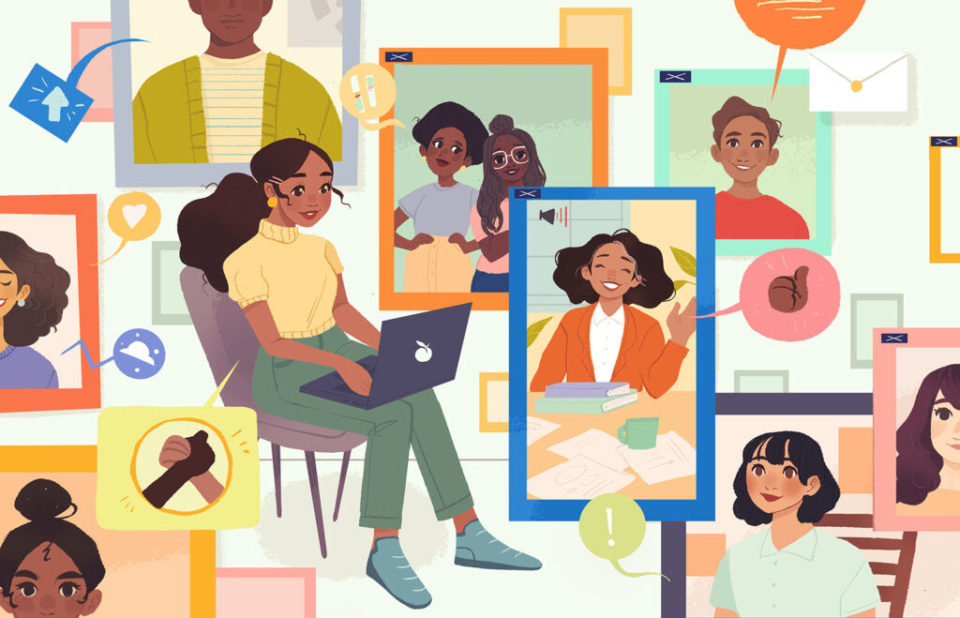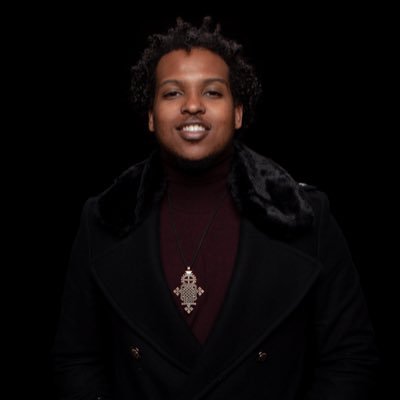Success Despite ‘Hidden Minefields’
. . . Attendees Excused Technical Glitches
Some Seize on a ‘Gaffe,’ Others Keep Moving
Verbal Grenade Upsets NABJ Sports Meeting
Sports Diversity Program Reaching 10th Year
The News About Kamala Had to Wait
Part 2:
NAHJ Urges End to ‘Minorities’ Label
Current Usage ‘Erases Identities,’ Group Says
Racial Reckoning Touches American English
Slavery Catches Up With Millard Fillmore
Even Pete Hamill Could Misfire
Zuri Berry Challenges ‘Problematic’ Story
How great is this, both national presidents work in Chicago. https://t.co/4L4JoLVVde
— Dorothy Tucker NABJ (@Dorothy4NABJ) July 21, 2020
Dorothy Tucker of NABJ and Hugo Balta, NAHJ (video)
Homepage illustration by Karina Perez for the Latino Reporter
Success Despite ‘Hidden Minefields’
The success of the first virtual Democratic National Convention likely means that aspects of the online gathering — videos, the focused attention by a home audience that doesn’t compete with balloons, confetti and horns, and the ability to have on-location participation from around the country — are here to stay, according to commentators.
The same is true of the first virtual convention of the National Association of Black Journalists and the National Association of Hispanic Journalists, a joint effort that took place Aug. 5-8.
“Some form of a virtual component MUST be integrated with in-person going forward because of the enormous success in attendance, engagement and feedback from members and partners,” NABJ Executive Director Drew Berry messaged Journal-isms on Friday. That includes regional conventions, he said.
A preliminary survey showed 29.46 percent were “extremely satisfied,” 44.19 percent satisfied and 20.93 percent “somewhat satisfied,” Berry said. Also, 35.43 percent were first-time conference attendees.
Alberto B. Mendoza, executive director of NAHJ, went on record during the NAHJ membership meeting, the Latino Reporter student project reported.
Mendoza expects that “next year may still bring concerns about the spread of coronavirus,” April Rubin and Julian Berger wrote on Aug. 9.
“Mendoza said this year’s convention was less expensive for the organization and its members because the cost of food, hotel rooms and flights was taken out of the equation.”
As the convention ended, Journal-isms asked NABJ President Dorothy Tucker and NAHJ President Hugo Balta for their assessments.
Q: What are your takeaways from this first-time venture into a virtual convention?
Tucker: This historic convention exceeded my expectations. I was simply blown away by the number of attendees. We attracted first time journalists who found the virtual convention convenient to their work schedule or more affordable. Veteran journalists returned to take part in our outstanding workshops. Some workshops had nearly 300 participants. The career fair was the biggest surprise. I am so grateful to our partners who worked overtime, assigning recruiters 9am to 9pm to accommodate as many members as possible. It was such a joy to hear from members who got a chance to engage with multiple managers and felt enlightened by the encounter.
Balta: I am very pleased with the outcome of the first-ever virtual conference; I couldn’t be happier with the turnout. The program directors turned adversity due to COVID-19 into an opportunity in producing an amazing event focused on what matters most to members; among them training and recruiting. The one-on-one appointments with recruiters garnered over 6,115 scheduled interviews with the 170 employer booths.
Q: If NABJ/NAHJ does it again, what would change?
Tucker: The best part of NABJ is networking with colleagues and interacting with friends. We will work on providing more live workshops, more chats and more virtual networking events. I definitely want to expand [Grubhub] to more members. From a technical viewpoint there were some glitches so we’ll review vendors and choose a platform that is even more stable.
Balta: There is always room for improvement. The NAHJ would hope that if we produced a virtual convention again, we’d simply have more time to prepare and communicate the schedule and programming further ahead of time. But in this case, NAHJ-NABJ moved as fast and as efficiently as possible, and people trusted in the value our organizations were going to bring, and because of that our attendee numbers were better than anyone could have predicted.
Q: Can you give readers a sense of the time, money and personnel power it took to pull this off, compared with an in-person convention?
Balta: The exploration and due diligence of platform integration took the most amount of time; dozens of NAHJ teams worked around the clock with their NABJ counterparts to realize the virtual conference.
Tucker deferred to Berry (pictured, below, by Martha Asencio-Rhine, NABJ Monitor), who messaged Friday:
“Some form of a virtual component MUST be integrated with in-person going forward because of the enormous success in attendance, engagement and feedback from members and partners. We learned so much on how to further enhance our enormous number of opportunities. It takes every bit of time and even more personnel to pull off our virtual conference because we tried to mirror, except for in-person, all of our content areas including live video (in-person equivalent) interviews in the career fair and even serving more than 1400 (fourteen hundred) meals, which is more than we would normally do at our regular convention.
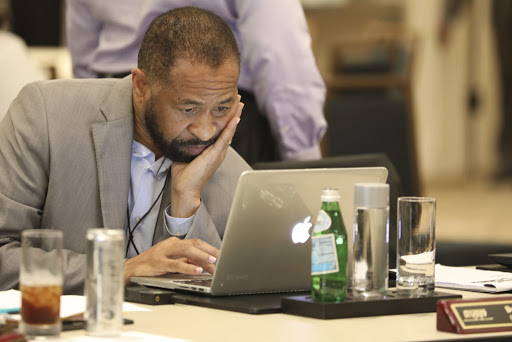 “Not being able to start the process earlier because of sensitive contract negotiations that prohibited us from doing anything earlier made preparations for the virtual convention more intense and more time-consuming. The unknown about the virtual environment and unknown operational efficiencies along with integration requirements and deadlines of new first-time and repeat vendors . . . increased the complexity compared to the regular in-person conference. Integration operations were full of explosive hidden minefields. (WE PRAYED A LOT AND THE GOOD LORD HAD MERCY ON US.)
“Not being able to start the process earlier because of sensitive contract negotiations that prohibited us from doing anything earlier made preparations for the virtual convention more intense and more time-consuming. The unknown about the virtual environment and unknown operational efficiencies along with integration requirements and deadlines of new first-time and repeat vendors . . . increased the complexity compared to the regular in-person conference. Integration operations were full of explosive hidden minefields. (WE PRAYED A LOT AND THE GOOD LORD HAD MERCY ON US.)
“Much more personnel needed and added because of the enormous technical lift and training necessities for staff, moderators, partners, sponsors and attendees via videos and documents etc. . . “
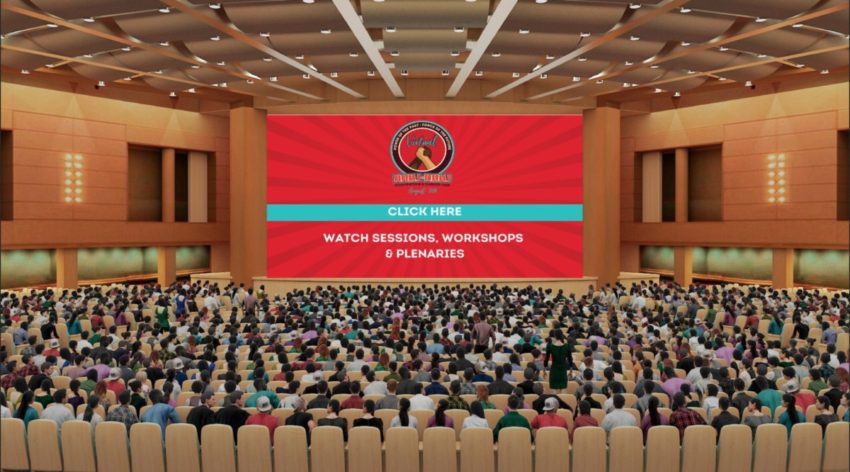
. . . Attendees Excused Technical Glitches
The joint convention drew 3,713 people, topping the 2016 NABJ convention by three people, Executive Director Drew Berry said at the NABJ business meeting. NABJ attendees numbered 3,009; NAHJ, 704. “We turned dozens away,” Berry said at the Aug. 8 session, because the technology would not allow any more to be booked. Treasurer Greg Morrison reported that the association is headed for a $900,000 projected surplus, its fifth consecutive one.
The event was originally scheduled for Washington, D.C., but the COVID-19 pandemic forced the convention to go virtual, but not before delicate negotiations with the host hotels that saved the associations $1.4 million in penalties, Berry said.
NAHJ, meanwhile, reached a new membership high, according to the Latino Reporter, the convention student project. “As of Saturday afternoon, the organization had 3,031 members, [board member Robert] Hernandez announced at the organization’s annual membership meeting — an all-time high,” Diane López Olea reported. “According to NAHJ records, the previous record was just above 2,500 members. . . .”
There was no disputing the technical problems, but in general, members were forgiving.
A panel sponsored by Spotify had an unwelcome intrusion. “Porn flooded the screen. Obscenities echoed through the speakers. The session had been Zoom-bombed,” López Olea wrote for the Latino Reporter.
Denise Clay, a Philadelphia NABJ member, messaged Journal-isms, “With the exception of the technical glitches, which weren’t as many as folks feared, by the way, it was a good convention. I’d like to see many of the workshops repeated next year because they provided good content.
“But I hope we reconnect in person next year for a couple of reasons. One, the fellowship aspect is complicated by having to play ‘Follow The Bouncing Zoom Room’ and two, when it comes to meetings and things, we tend to conduct ourselves differently with the separation of the Internet than we do face to face.”
Another NABJ member who could not see all of the convention noted that while employers might allow employees time away to attend an in-person convention, that is less likely when the event is on a computer screen.
Separately, Manuel Smith, president of the Philadelphia Association of Black Journalists, told Journal-isms, “I only logged in officially for one session during the week. Because I was working or otherwise occupied. And, I think that was the case of many others too. But that’s not necessarily the problem of NABJ, it’s the zoom-verse that we’re in now.”
Rafael Olmeda of the South Florida Sun-Sentinel, a past NAHJ president, said, “Nothing can replace an in-person convention. NAHJ and NABJ made a silk purse out of a sow’s ear for 2020. Both organizations now face the challenge of turning 2021 into a success regardless of the format. The current boards (NAHJ and NABJ) their staffs and the organizing committees should take a bow and make a promise: we will emerge from this crisis stronger than we were when we entered it.”
Olmeda added, “I wish I had seen more representation from NAHJ on a bunch of panels in which I participated.”
To a question about whether an extensive opening-night presentation by the Disney Co. was too promotional, Tucker said at the business meeting that perhaps more work from ABC News and The Undefeated, two Disney Co. properties, could be featured.
In the CNN “Reliable Sources” newsletter of Aug. 7, CNN’s An Phung emailed about the substance of the convention:
“I spent the last three days participating in a number of workshops and sessions at the combined virtual conference of NABJ and NAHJ and found myself riveted by the collective wisdom of the Black and Hispanic journalists in our industry. Session topics ran the gamut, from criminal justice reform to voting rights, from managing your personal finances to managing your mental health.
“Here are my top three takeaways: 1.) Get yourself a ‘board of directors’— a diverse group of mentors you can turn to for advice. 2.) Self care matters, especially right now. In the sessions I attended, running was the most-cited form of stress relief. Meditation was second. 3.) Lack of newsroom diversity can contribute to loneliness. In the same way we need a sense of community to thrive in our personal lives, we need the same thing in our professional lives.
“This is by no means a complete list. The #NABJNAHJ20 hashtag on Twitter is a great source for additional highlights from those in attendance and the NABJ and NAHJ websites are great resources for journalists of all backgrounds. The four-day event couldn’t have arrived at a more crucial time as newsrooms across the country are forced to reckon with how they staff and deploy minority journalists who can help tell stories with unique insight and empathy…”
Many of the sessions were video recorded, made possible by the Zoom technology. While, they were taken down when the convention ended, Berry told Journal-isms that some of the more popular ones would be reposted
- Latino Reporter (student project)
- NABJ Monitor (student project)
- Stan Norfleet, barrettsportsmedia.com: The NABJ/NAHJ Convention May Have Offered A Glimpse Of The Future (Aug. 13)
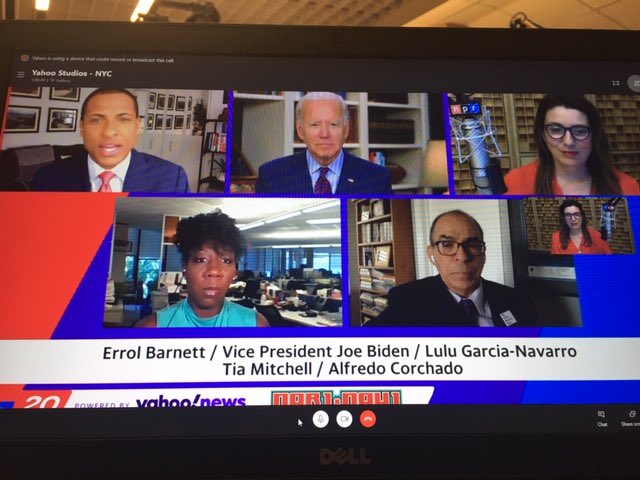
Some Seize on a ‘Gaffe,’ Others Keep Moving
Three weeks before Joe Biden gave the speech that some called the most consequential of his career, accepting the Democratic presidential nomination Thursday night, Biden spoke to Black and Hispanic journalists.
The coverage of that session was notable for exposing the differences in what reporters took away from it. While Blacks and Latinos mostly focused on the substance, the mainstream press (and The Root) focused on the “gaffe.”
Well into the nearly hour-long Aug. 5 interview for the joint convention of the National Association of Black Journalists and National Association of Hispanic Journalists, NPR’s Lulu Garcia-Navarro asked, “Are you going to reengage with Cuba though? I’m specifically wondering about the Florida communities that are incredibly interested in the Cuba issue and see status given to Venezuelans while Cubans are being deported. Will you be engaged with Cuba?”
Biden responded, “The answer is yes, I’m going to engage … yes, yes. And by the way, what you all know but most people don’t know, unlike the African American community with notable exceptions, the Latino community is an incredibly diverse community with incredibly different attitudes about different things. You go to Florida, you find a very different attitude about immigration in certain places than you do when you’re in Arizona. So it’s a very different, a very diverse community.”
None of the four interviewers — Garcia-Navarro, CBS correspondent Errol Barnett, Alfredo Corchado of The Dallas Morning News and Tia Mitchell, Washington correspondent for the Atlanta Journal-Constitution, thought the comment worthy of reporting. After all, the Latino community is extremely diverse, and the Asian American community no doubt more so.
In the Black press, Jamyra Perry’s piece for the Philadelphia Tribune was headlined, “Biden said Blacks have been left out of the American dream for far too long.”
Barnett’s headline was, “Biden scoffs when asked if he’s taken a cognitive test.”
Corchado’s was “Biden says border wall construction will stop if he’s elected president.”
Garcia-Navarro went with “Biden Shares New Details Of His Plan For Overturning President Trump’s Agenda.“
And Mitchell: “Joe Biden shares vision for presidency, dismantling Trump agenda in video interview.”
However, others seized on the comparison of African Americans and Latinos, prompting Biden to walk back his words. “Despite being 24-hour cable news networks, CNN and MSNBC offered little to no on-air coverage of Joe Biden’s latest gaffes, at least before he offered a mea culpa,” Joseph A. Wulfsohn wrote Aug 7 for Fox News.
“Prior to Friday morning, when MSNBC’s Joe Scarborough defended Biden’s ‘inartful’ comments on diversity and CNN’s John Berman pointed out the ‘irony’ of President Trump going after Biden over his racially-charged remarks, there was a virtual blackout of the controversy for nearly two full days on their networks. . . .”
Some had trouble reporting accurately the circumstances under which the remarks were made.
NPR’s Mara Liasson raised the issue the following Sunday with Garcia-Navarro, who corrected Liasson when she misidentified the interview as having taken place on CBS.
The Root seemed to be closer to Fox News than to the reporters of color, with Zack Linly managing to use the “f” and “b” and “n” words all in the same piece and describing the interview as a solo one with Garcia-Navarro rather than the panel.
CNN’s John King appeared to explain the lack of reaction elsewhere most accurately.
“He’s trying to make the point, and maybe he didn’t make it articulately as he would have liked, [but] I believe the point he was trying to make is that most African Americans overwhelmingly support Democrats, and if you go around the country — you go to Florida, for example, you have the Cuban American population, or you might have a Puerto Rican population that has moved to Florida that has a different view than, let’s say, a Latino in Nevada or Arizona.”
Master Tesfatsion
Verbal Grenade Upsets NABJ Sports Meeting
A 29-year-old sportswriter tossed a verbal hand grenade into the business meeting of the Sports Task Force of the National Association of Black Journalists, accusing its leaders of being “baldheaded OGs” (original gangsters) who are not receptive to younger people like himself.
The speaker was Master Tesfatsion, senior writer and host of “Untold Stories” for the Bleacher Report. Sports Task Force members said he was invited to speak by Task Force chair A. Sherrod Blakely, digital media reporter at NBC Sports Boston.
“I’m going to pass on comment regarding the situation,” Tesfatsion messaged Journal-isms on Saturday.
Some veteran members said they felt disrespected and the battles they had fought unappreciated, even though they were receptive to suggestions that they become more inclusive.
The Task Force itself was created in 1987 in response to a feeling that Black sportswriters were not sufficiently respected within NABJ, let alone in the profession, as members pointed out in a video on the history of the group posted in May. The group exists to provide mutual support, training, advocacy and celebration of their achievements.
The most recent diversity report from The Institute for Diversity and Ethics in Sports (TIDES), issued two years ago, found that “85 percent of the sports editors, 77 percent of the assistant sports editors, 80 percent of the columnists, 82 percent of the reporters and 78 percent of the copy editors/designers were white.”
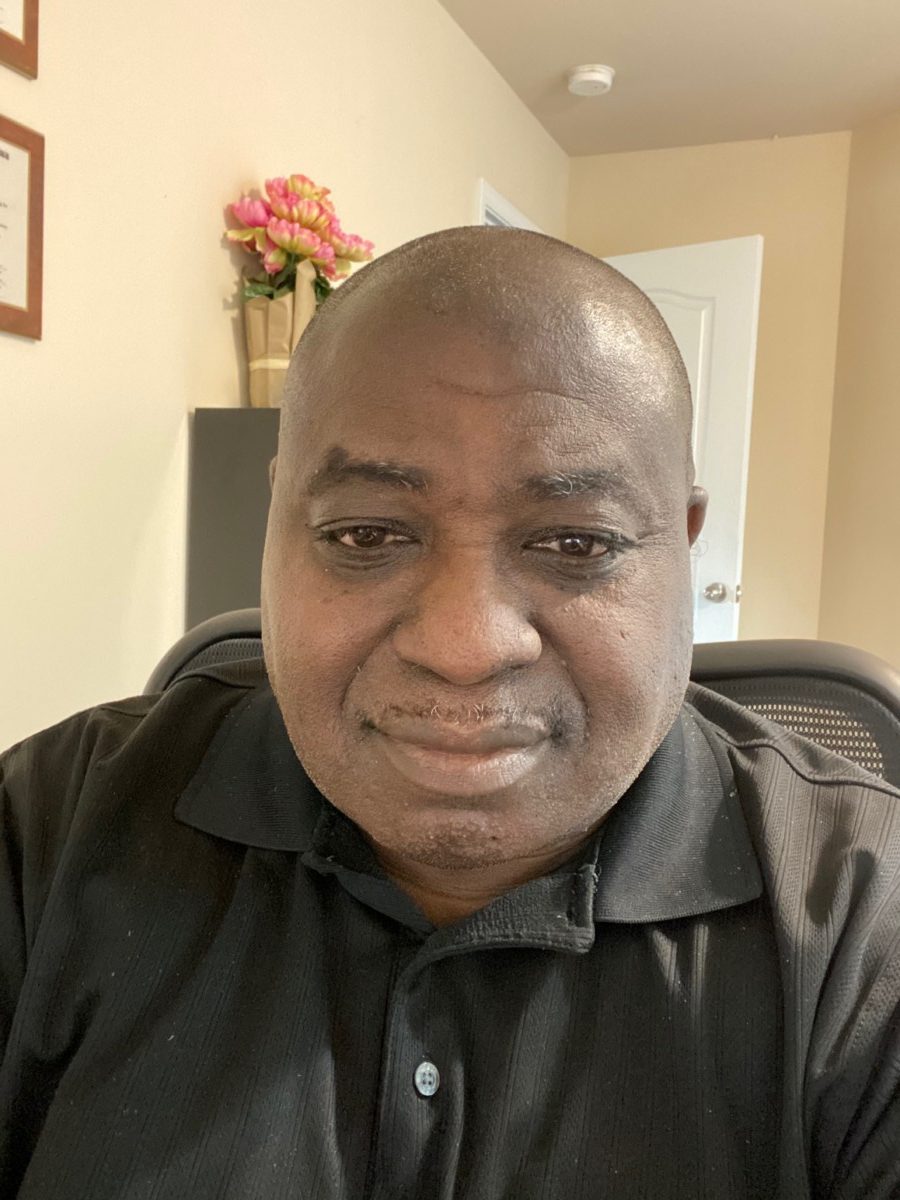 David Squires (pictured), a longtime Sports Task Force member, told Journal-isms he shaved his head after the meeting “so I could become a baldheaded OG!” Squires said he agreed with comments from other members about adding leadership positions for young and emerging journalists, gender equality, LGBTQ+ inclusion and independent and freelance professionals. Squires also said, “We should encourage all members to be active participants in local chapters and regional conventions. And if there are not local chapters in your areas, start one. That’s leadership. Change starts at home.”
David Squires (pictured), a longtime Sports Task Force member, told Journal-isms he shaved his head after the meeting “so I could become a baldheaded OG!” Squires said he agreed with comments from other members about adding leadership positions for young and emerging journalists, gender equality, LGBTQ+ inclusion and independent and freelance professionals. Squires also said, “We should encourage all members to be active participants in local chapters and regional conventions. And if there are not local chapters in your areas, start one. That’s leadership. Change starts at home.”
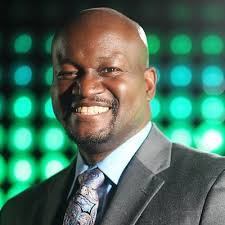 Blakely (pictured) told Journal-isms on Aug. 9, “The NABJ Sports Task Force has and will continue to pursue pathways towards improvement which includes but is not limited to, better inclusivity among our ever-expanding membership base.”
Blakely (pictured) told Journal-isms on Aug. 9, “The NABJ Sports Task Force has and will continue to pursue pathways towards improvement which includes but is not limited to, better inclusivity among our ever-expanding membership base.”

Sports Diversity Program Reaching 10th Year
In 2011, Michael Anastasi, then newly appointed president of the Associated Press Sports Editors, announced a new APSE diversity initiative “aimed at increasing the number of women and people of color who sit in this room, who are one of us, who are sports editors.”
On Aug. 14, Anastasi sent Journal-isms this update:
“Ten years ago, when I was president of APSE (and working as managing editor of The Salt Lake Tribune), I launched the APSE Diversity Fellowship Program.
“You wrote about it at the time and it even later made your Top 10 greatest hits list for 2011, which was very nice.
“Well, that program has continued to grow and thrive. We are now recruiting for Class X, a milestone. Through our first nine classes, we have graduated 43 Fellows.
“One key moment came for the program in 2016 when the Knight Foundation provided a $31,250 grant. In February, we took another step by successfully organizing a 501(c)(3). This greatly opens up the fundraising possibilities for us — and our new APSE Foundation has received its first grant, $10,000 from the Gannett Foundation.
“The Diversity Fellowship Program features a nine-month course of study (October through June) that includes a three-day academic component focused on techniques of management, strategic leadership principles and the latest in digital journalism strategy. It also features attendance at APSE professional development events over the course of the year.
“Although my tenure as a national officer of APSE ended long ago, I have continued to direct the program in conjunction with current officers and members of the APSE diversity committee, particularly Jorge Rojas and Larry Graham.
“The aim of the APSE Diversity Fellowship program, primarily targeted at mid-career professionals, is to prepare and support Fellows for leadership positions and advancement at all career levels of sports journalism while providing lifelong access to the program’s support network.
“Each graduate can attest to the value of the program on their career and personal development and many have earned promotions and advanced through the profession, a number multiple times and a number beyond sports. Our graduates have not only increased diverse representation in journalism leadership, they’ve become next-generation leaders of this critically-important effort themselves.
“Graduates include editors now at the New York Times, the Seattle Times, The Athletic, The Tennessean, the Arizona Republic, the Houston Chronicle, the Philadelphia Inquirer, YahooSports and others. Just this week, graduate Reina Kempt was named sports editor of the Louisville Courier-Journal. Our track record is excellent. . . .”
Predating the ASNE fellowship program is the Sports Journalism Institute, an intensive nine-week training and internship program held every summer since 1993. It is based at the University of Arizona’s Walter Cronkite School of Journalism and Mass Communication after being hosted by the University of Missouri’s School of Journalism. It was founded by Leon H. Carter, an ESPN vice president and an active member of the NABJ Sports Task Force, and Sandy Rosenbush, event news editor at ESPN.
- Pat Borzi, MinnPost: Why having more Black newsroom leaders is so critical for journalism (Aug. 12)
- Bob Hohler, Boston Globe: The lack of Black leaders in New England college sports is ‘what institutional and systemic racism look like’
- National Association of Black Journalists: Mark Cuban Donates $100K to NABJ COVID-19 Relief Efforts (June 12)
#AAJA20 panelist @baomnguyen on how POC storytellers can educate traditional, white audiences: “We’re expected to be tour guides, we’re not entrusted to be artisans. We can be loud. We can make people uncomfortable.”@AAJAsports @aaja pic.twitter.com/gxBvPpY42y
— Josh Tolentino (@JCTSports) August 15, 2020
The News About Kamala Had to Wait
The news that many had waited for — Joe Biden’s choice for a running mate — was announced Aug. 11 as the Asian American Journalists Association virtual convention was under way. And Biden’s choice, Sen Kamala Harris, D-Calif., was an Asian American as well as an African American.
But viewers of an AAJA presentation on Asian Americans and World War II — as soldiers, as forced “comfort women” to male Japanese soldiers and as residents of U.S. internment camps — were not told the news.
Photographer Darrell Miho explained to Journal-isms in a message on Saturday, “as the moderator, my responsibility is to keep the discussion moving and on topic. we had a lot of information to cover and not enough time to do it.
“as journalists, we are supposed to remain unbiased and give fair and equal coverage to any and all candidates.
“it would also be inconsiderate to our panelists and inappropriate to interrupt the panel to make a political announcement.”
It was eerily similar to the reaction at a previous AAJA convention during the aftermath of the police shooting death in 2014 of unarmed teenager Michael Brown in suburban Ferguson, Mo., after which journalists were detained.
“Different members are talking about it,” AAJA President Paul Cheung told Journal-isms at the time. “People here are focusing on jobs and career, and you tend to be in a bubble” at conventions.
Others were not as shy about discussing the historic selection of Harris, especially given the presence of White House and political reporters such as Elaine Quijano and Weijia Jiang.
The concern about whether Harris would also be viewed as Asian American took its place alongside other issues of identity and self-awareness discussed by the 1,500 who assembled virtually, the highest number in 15 years, AAJA President Michelle Ye Hee Lee said at the conclusion of the Aug. 9-15 event.
With President Trump referring to COVID-19 as the “kung-flu” and hate crimes against Asian Americans rising, speakers said the journalists had no choice. “You felt more Asian than ever before,” Juju Chang, co-anchor of ABC-TV’s “Nightline,” said. “Is it in your head or are we getting double takes? It wasn’t overt but enough to make you feel like you are gaslighting yourself.”
Lee, a Washington Post reporter, said, “The pandemic makes you think about how Asian we all are.”
Mental health is part of that struggle, just as is the sense of responsibility to be sure one’s reporting carries the right context.
Jiang, a CBS News White House correspondent, disclosed in March that an unnamed White House official referred to the coronavirus as the “kung-flu” directly to her face. “Makes me wonder what they’re calling it behind my back,” she wrote on Twitter.
“Trump started by deflecting — ‘they’re losing their lives everywhere in the world’ — before pivoting suddenly: ‘They’re losing their lives everywhere in the world, and maybe that’s a question you should ask China. Don’t ask me, ask China that question, okay?’
“Jiang, an American journalist of Chinese descent, seemed taken aback and asked, ‘Why are you saying that to me, specifically?’ He replied that he would give the same answer to ‘anybody that asks a nasty question.’ Seconds later, he abruptly ended the news conference and walked off. . . .”
Jiang told the convention that part of her job is “allowing people to understand that words have power.” If you have limited time, explain one thing well, rather than too many things poorly.
That applied to the selection of Harris as well, Jiang said. “I was personally and professionally really happy” to learn the news, but many media outlets omitted that Harris was Asian American, born to an Indian mother. “There is another community that is celebrating,” Jiang said. “This is a huge day for the Asian American community.”
News events “have pushed into the forefront this issue of identity,” Quiano added, “in a way it hasn’t been in the past.”
Dr. Sanjay Gupta, neurosurgeon and CNN’s chief medical correspondent, said at Sunday’s opening session that he did not think racism was discussed enough, and mentioned the health toll taken by microaggressions.
Referring to COVID-19, Gupta also said that “By the end of the year this may be the third largest cause of death in the United States,” but “I haven’t seen good demographic breakdown from the CDC on Asian American Pacific Islanders.”
[An analysis of new CDC data by the Marshall Project and the Associated Press Friday found that “Asian Americans join Blacks and Hispanics among the hardest-hit communities, with deaths in each group up at least 30 percent this year compared with the average over the last five years. . . . The toll on Asian Americans has received far less attention.”]
Gupta, like Jiang, implored the journalists to think of the consequences of their reporting. “What is your objective when writing the story? Are you [reaching] people through fear or inspiring people through what is possible? Not just the what but the how. . . . continuing to [tell] people that it’s real.”
In 2017, the last year for which credible figures are available, the American Society of News Editors (now the News Leaders Association) annual newsroom diversity survey found that Asians were 4.28 percent, up from 4.25 percent (scroll down) and Hawaiian/Pacific Islander, .13 percent, down from .14 percent
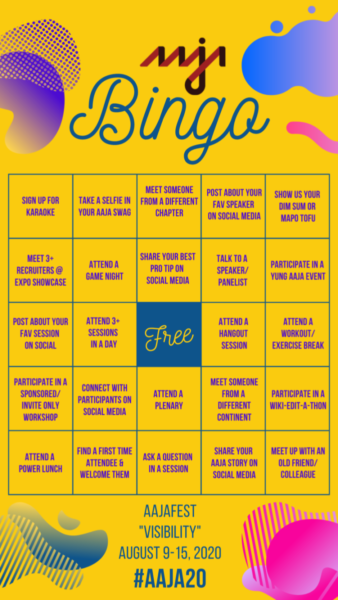
In 2010, Asians were 4.8 percent of the U.S. population [PDF]; Native Hawaiian or other Pacific Islanders 0.2 percent, according to the U.S. Census Bureau. However, the bureau projects the Asian American population will double by 2060 [PDF].
Lee said in her closing remarks that she wanted “our members to be forces of power and influence in our industry. I want our AAPI community to no longer be too small in number to matter.”
Harris embodies the increasing complexities of racial identity, and this past Wednesday, AAJA and the South Asian Journalists Association addressed that.
“The Asian American Journalists Association (AAJA) and the South Asian Journalists Association (SAJA) urge contextualized and comprehensive news coverage around the racial identity of Democratic vice presidential nominee Sen. Kamala Harris,” they wrote.
“The proper way of characterizing someone’s racial or ethnic background, particularly when that background is of national interest, is a complex matter of identity and culture. . . .
“AAJA and SAJA urge newsrooms to be mindful in their language of Harris’ multifaceted racial identity and the ways she has described her own upbringing and background. . . .”
AAJA also elected officers for the 2021-2022 term.
They are:
President: Michelle Ye Hee Lee, 490 votes
VP of Civic Engagement: Julia B. Chan, 345 votes; Jonathan Choe, 166 votes
VP of Finance: Jin Ding, 315 votes; Ravi Kapur, 193 votes.
To subscribe at no cost, please send an email to journal-isms-subscribe@yahoogroups.com and say who you are.
Facebook users: “Like” “Richard Prince’s Journal-isms” on Facebook.
Follow Richard Prince on Twitter @princeeditor
Richard Prince’s Journal-isms originates from Washington. It began in print before most of us knew what the internet was, and it would like to be referred to as a “column.” Any views expressed in the column are those of the person or organization quoted and not those of any other entity. Send tips, comments and concerns to Richard Prince at journal-isms-owner@yahoogroups.com
View previous columns (after Feb. 13, 2016).
- Diversity’s Greatest Hits, 2018 (Jan. 4, 2019)
- Book Notes: Is Taking a Knee Really All That? (Dec. 20, 2018)
- Book Notes: Challenging ’45’ and Proudly Telling the Story (Dec. 18, 2018)
- Book Notes: Get Down With the Legends! (Dec. 11, 2018)
- Journalist Richard Prince w/Joe Madison (Sirius XM, April 18, 2018) (podcast)
- Richard Prince (journalist) (Wikipedia entry)
- February 2018 Podcast: Richard “Dick” Prince on the need for newsroom diversity (Gabriel Greschler, Student Press Law Center, Feb. 26, 2018)
- Diversity’s Greatest Hits, 2017 — Where Will They Take Us in the Year Ahead?
- Book Notes: Best Sellers, Uncovered Treasures, Overlooked History (Dec. 19, 2017)
- An advocate for diversity in the media is still pressing for representation, (Courtland Milloy, Washington Post, Nov. 28, 2017)
- Morgan Global Journalism Review: Journal-isms Journeys On (Aug. 31, 2017)
- Diversity’s Greatest Hits, 2016
- Book Notes: 16 Writers Dish About ‘Chelle,’ the First Lady
- Book Notes: From Coretta to Barack, and in Search of the Godfather
- Journal-isms’ Richard Prince Wants Your Ideas (FishbowlDC, Feb. 26, 2016)
- “JOURNAL-ISMS” IS LATEST TO BEAR BRUNT OF INDUSTRY’S ECONOMIC WOES (Feb. 19, 2016)
- Richard Prince with Charlayne Hunter-Gault,“PBS NewsHour,” “What stagnant diversity means for America’s newsrooms” (Dec. 15, 2015)
- Book Notes: Journalists Follow Their Passions
- Book Notes: Journalists Who Rocked Their World
- Book Notes: Hands Up! Read This!
- Book Notes: New Cosby Bio Looks Like a Best-Seller
- Journo-diversity advocate turns attention to Ezra Klein project (Erik Wemple, Washington Post, March 5, 2014)

